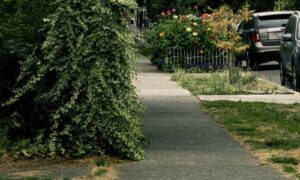A thorny, much-branched shrub or small tree from 6-30 ft. in height. Small tree with compact, rounded crown of stout, spreading branches; often a thicket-forming shrub. Twigs are reddish and bear thick, oval, toothed leaves. White flowers occur in dense, terminal clusters and are followed by blue-black berries.
This species is a handsome ornamental with showy white flowers, glossy foliage, and odd, shiny black fruits. It is named for its discoverer, David Douglas (1798-1834), the Scottish botanical explorer. Description from wildflower.org
Home > Plant Guide >
Scientific Name
Family
Garden Type
Wildlife
Native Plant Region
Light needs
Water Needs
Plant Type
Bloom Color(s)
Height
Width
Months in Bloom
Safe Beneath Power Lines?

We’d like to maintain accurate and robust plant listings. If you see information that is not correct or that could be added to improve the listing, please let us know. Or if you’d like to suggest a plant to add to our plant guide, you can use this form do so. Thank you!

Look closer…and meet the local insects that pollinate the plants around your Seattle neighborhoods. Learn about some of our amazing native pollinating insects.

Get involved by sharing and mapping the birds, animals and nature around you to help the community understand the biodiversity in our neighborhood.

Gardeners can check out seeds for free from the library to plant. Then after harvest, gardeners bring seeds back to the library for others to enjoy in future growing seasons.

New types of vegetation can attract additional wildlife to an area. You might be surprised how a little green can go a long way!

Three inspiring local food justice practitioners will share how their work in urban farming improves access to healthy foods, fosters relationships to land, and builds community.

Start a garden in a planting strip along the street. Explore our interactive corridor map, find what to grow, and start nurturing today.
Nature of Your Neighborhood is a collaboration between Birds Connect Seattle, the Capitol Hill EcoDistrict, and the Seattle Bird Conservation Partnership. Our goal is to foster relationships between the people and the nature of their neighborhoods.